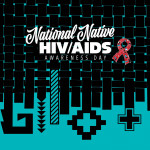The Washington Heights CORNER Project in New York City is a street-based effort whose spelled-out acronym says it all: Community Outreach Resources Needle Exchange & Harm Reduction. Founded in 2007, the group has served over 2,000 people—nearly 60 a day at its drop-in center or through its programs—all while fighting HIV and hepatitis C. To learn more, we emailed the project’s associate director of outreach and prevention services Sarah Deutsch and peer coordinator Nick van Breda.
Recently, the U.S. Congress effectively lifted the federal ban on funding needle exchanges. How might this affect you?
Exchanges will now be eligible to apply for federal funding previously beyond our reach, such as from the CDC. However, the ban remains in terms of funding syringes themselves, which is a shame considering the ongoing price hikes for the type of insulin syringes most commonly used by our participants.
Tell us about your online outreach.
As New York State has observed an increase in younger injection drug users, it is critical for syringe exchange programs to adapt to the behaviors of this population. This demographic is the first group of U.S. injectors to grow up in the age of the Internet. One of the main principles of harm reduction is to “meet people where they’re at,” and in 2016, they’re online. So we launched our Online Injectors Initiative in early 2015.
What are your numbers and services regarding HIV and hep C?
We work with ASCNYC [AIDS Service Center NYC] who conducts our HIV testing and [links] people into comprehensive care if they test positive. We also offer a whole continuum of services for hep C, [including] on-site treatment. Our community is racially diverse, with [most] being Latino; about two thirds of our participants are male. Syringe exchange has been amazingly effective at reducing the number of HIV infections that are attributed to injection drug use. In the early years of the HIV epidemic, a huge proportion of new infections were caused by sharing needles. Now, less than 4 percent are statewide, and less than 5 percent of our participants report being HIV positive. So, prevention works!







Comments
Comments